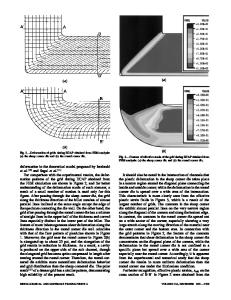Enhancing the Damping Behavior of Dilute Zn-0.3Al Alloy by Equal Channel Angular Pressing
- PDF / 4,454,934 Bytes
- 9 Pages / 593.972 x 792 pts Page_size
- 2 Downloads / 330 Views
INTRODUCTION
DAMPING capacity of a material is the measure of its ability to dissipate elastic strain energy during mechanical vibration or wave propagation, so that the vibrations or stress waves propagating through the material are attenuated and gradually die off.[1] The application of materials with the ability of high energy absorption to mechanical parts and systems provides cost effectiveness and simplicity. In such applications, the mechanical vibration is attenuated by the part itself, and there is no need to use any additional energy absorbers or systems for vibration control. Besides being used in mechanical parts or systems, high damping materials can also be used as seismic damper materials adapted to buildings or engineering structures to be able to control the vibration by plastic deformation-induced energy absorption which may occur under earthquake and wind conditions.[2–4] These necessities have driven engineers and scientists towards the development of new materials with high damping capacity and improvement of their energy absorption ability. It is well known that Mg–Zr,[5,6] Mn–Cu,[7] Ni–Ti,[8,9] and Zn–Al[10–20] alloys are some of the materials having high damping capacity. Their damping capacity originates from the stress-induced movements of dislocations MUHAMMET DEMIRTAS is with the Department of Mechanical Engineering, Bayburt University, 69000 Bayburt, Turkey, and also with the Department of Mechanical Engineering, Karadeniz Technical University, 61080 Trabzon, Turkey. KADRI CAN ATLI is with Department of Mechanical Engineering, Anadolu University, Eskisehir 26555, Turkey. HARUN YANAR and GENCAGA PURCEK are with the Department of Mechanical Engineering, Karadeniz Technical University. Contact e-mail:[email protected] Manuscript submitted June 24, 2016. Article published online March 24, 2017 2868—VOLUME 48A, JUNE 2017
or grain, twin and domain boundaries,[21] as well as the shape change due to martensitic phase transformation.[8,21] Among them, zinc–aluminum (ZA) alloys deserve special attention since they have excellent workability and high damping capacity at a wide range of temperatures, while their strength levels can be tailored through thermomechanical treatments. Considering the binary ZA alloy system, many compositions would give high damping capacity including well-known ZA alloys such as Zn-8Al (ZA8), Zn-11.5Al (ZA12), Zn-27Al (ZA27), and Zn-22Al (ZA22).[1] The damping behaviors of these alloys have been more or less investigated.[10–20] However, Zn-based alloys with low Al concentrations (up to 1.1 wt pct Al), so called quasi-single phase (or dilute) Zn-Al alloys, have not been studied as damping materials till now. It is believed that such Zn-Al alloys, after microstructural refinements, can exhibit higher damping capacity compared to well-known two-phase Zn-Al alloys with high Al contents under low to medium loading conditions. This is due to the fact that interphase sliding of lamellar structures and/or grain boundaries are accepted as the main damping mechanism in ZA alloys
Data Loading...











